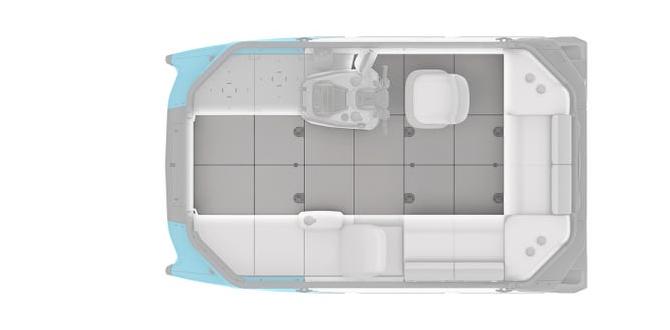Motion sensor lights for indoor stairs are a brilliant, energy-saving way to enhance safety and convenience, guiding your steps automatically without you needing to flip a switch.
Tripping on the stairs in the dark can be a real worry, especially for families with little ones or older adults. Fumbling for light switches in the middle of the night or when carrying groceries is never ideal. That’s where motion sensor lights for indoor stairs come in as a fantastic, modern solution. They provide a gentle, automatic glow exactly when and where you need it, making those stairways safer and adding a touch of smart convenience to your home. Think of them as helpful little guardians, ready to light your path the moment you step onto the stairs. We’re going to walk through everything you need to know to get these brilliant lights installed, making your home safer and more user-friendly.
Why Motion Sensor Lights Are Perfect for Indoor Stairs
Installing motion sensor lights on indoor stairs isn’t just a trendy tech upgrade; it’s a practical decision that brings a host of benefits. These lights are designed to detect movement within a specific range and automatically turn on, illuminating your path. Once you’ve moved out of the sensor’s range, they typically switch off after a set duration, conserving energy.
Safety First, Always!
The foremost benefit is enhanced safety. Stairs can be a hazard, particularly in low-light conditions or when visibility is poor. Motion sensor lights ensure that your steps are always visible, significantly reducing the risk of trips and falls. This is especially important for households with:
- Young children who might be unsteady on their feet.
- Elderly individuals who may have reduced mobility or vision.
- Anyone who frequently navigates the stairs in the dark, such as when getting a drink in the middle of the night.
Energy Efficiency Wins
Unlike traditional lights that are left on for extended periods, motion sensor lights only activate when needed. This automatic on/off function is a huge energy saver. You’ll notice a difference in your electricity bills over time, making it an eco-conscious choice that also benefits your wallet. The U.S. Department of Energy recommends using energy-efficient lighting to reduce consumption, and these smart lights fit the bill perfectly. You can learn more about energy-efficient lighting options on their official website: Energy.gov.
Convenience and Comfort
There’s a simple pleasure in not having to search for a light switch. Motion sensor lights offer seamless convenience. As you approach the stairs, the lights gently illuminate, guiding your way without any effort on your part. This is particularly comforting during nighttime trips to the bathroom or when dealing with full hands, like carrying laundry or a sleeping child.
Aesthetic Appeal
Modern motion sensor lights come in a variety of stylish designs, from sleek, minimalist fixtures to more decorative options. They can blend in with your existing decor or even become a subtle design element themselves. The soft, ambient light they provide can also enhance the overall atmosphere of your home, creating a warm and inviting feel.
Types of Motion Sensor Lights for Indoor Stairs
When you’re looking for motion sensor lights for your indoor stairs, you’ll find a few different types. Each has its own way of working and installation process, so it’s good to know what options are out there.
Battery-Powered Stick-On Lights
These are the easiest to install and a fantastic option for a quick DIY project. They run on batteries (usually AA or AAA) and use adhesive strips to attach to walls, stair risers, or even underneath banisters. Most of these use passive infrared (PIR) sensors, which detect changes in heat. They’re great for renters or those who don’t want to mess with wiring.
- Pros: Super simple installation, no wiring needed, portable, affordable.
- Cons: Battery life needs monitoring, light output might be less powerful than wired options, requires regular battery replacements.
Plug-In Motion Sensor Lights
These lights plug directly into a standard wall outlet. Many are designed as small indicator lights that go on the wall just above or below each step, or even as larger sconces with integrated motion sensors. They offer a bit more consistent power than battery-operated versions and don’t require you to worry about battery changes. Installation is typically as easy as plugging them in and positioning them correctly.
- Pros: No battery changes, consistent power, a good balance of ease and reliability.
- Cons: Requires an available power outlet near the stairs, cord management might be necessary for a tidy look.
Hardwired Motion Sensor Lights
These are the most permanent and often the most powerful solution. They are wired directly into your home’s electrical system, just like standard light fixtures. This installation is more involved and usually requires an electrician, unless you have experience with electrical work. Once installed, they offer reliable performance and can be integrated with your home’s existing lighting system or smart home technology.
- Pros: Permanent installation, high reliability, can be very powerful, often integrated with advanced features, no ongoing purchase of batteries or cartridges.
- Cons: Professional installation usually required (adds cost), not suitable for renters, more complex installation process.
Smart Motion Sensor Lights
Regardless of whether they are battery-powered, plug-in, or hardwired, many modern motion sensor lights also fall into the “smart” category. These can often be controlled via a smartphone app, allowing you to adjust sensitivity, duration, and even brightness. Some can be integrated with other smart home devices, like voice assistants (Alexa, Google Home) or security systems. They often offer the most customization.
- Pros: High customization, remote control, integration with smart home systems, advanced features.
- Cons: Can be more expensive, may require a Wi-Fi connection, setup can be more complex.
Choosing the Right Motion Sensor Light for Your Stairs
With so many options, picking the perfect motion sensor light for your indoor stairs involves considering a few key factors. It’s all about balancing your needs, budget, and DIY comfort level!
Consider a Table: Key Features to Compare
To help you make a decision, here’s a quick comparison of what to look for:
| Feature | Battery-Powered | Plug-In | Hardwired |
|---|---|---|---|
| Installation Difficulty | Very Easy | Easy | Difficult (Professional Recommended) |
| Power Source | Replaceable Batteries | Wall Outlet | Home Electrical System |
| Cost (Initial) | Low | Medium | Medium to High (Excluding Installation) |
| Maintenance | Battery Replacement | Minimal | Minimal |
| Light Output/Brightness | Varies (often lower) | Varies (often moderate) | Varies (can be very high) |
| Customization | Limited | Limited to Moderate | Moderate to High (especially smart versions) |
| Ideal For | Renters, quick fixes, temporary use | Homeowners with outlets, easy upgrades | Permanent installations, maximum reliability, new builds/renovations |
Factors to Consider:
- Installation: How comfortable are you with DIY? If you’re not handy with tools or electrical wiring, battery-powered or plug-in options are your best bet. For hardwired, factor in the cost of an electrician.
- Power Source: Are there convenient outlets near your stairs? If not, battery power or hardwiring might be necessary. Think about how often you’re willing to change batteries.
- Brightness (Lumens): Stairs need adequate light for safety. Look for lights that offer sufficient brightness (measured in lumens) for your specific staircase width and length. A general guideline for stair lighting is around 50-100 lumens per step for subtle illumination, but check product specifications.
- Sensor Range and Angle: Ensure the sensor can cover the area where people will be approaching the stairs from. Most indoor sensors have a range of 10-25 feet and an angle of 100-180 degrees.
- Adjustable Settings: Can you control how long the light stays on (duration) and how sensitive the motion detection is? This is useful for preventing lights from turning off too soon or staying on when no one is there.
- Style and Design: The lights should complement your home’s interior design. They come in various finishes and styles.
- Number of Lights: You’ll likely need one light per few steps, or strategically placed lights at the top and bottom and in between landings.
Step-by-Step Guide: Installing Battery-Powered Motion Sensor Lights
This is the simplest and most beginner-friendly installation. Let’s get your stairs lit up safely!
What You’ll Need:
- Battery-powered motion sensor lights (enough for your staircase)
- Cleaning cloth
- Rubbing alcohol (optional, for better adhesion)
- Your chosen lights’ mounting hardware (usually adhesive strips or screws)
The Steps:
- Plan Your Placement: Decide where each light will go. Common spots include the riser of each step, under the nosing of each step, or on the wall adjacent to the stairs. Measure to ensure even spacing. A helpful tip is to have the sensor point slightly downwards to catch movement as people approach.
- Clean the Mounting Surface: Thoroughly clean the spot where you plan to attach the light. Use a damp cloth and, if needed, a bit of rubbing alcohol to remove dust, grease, or grime. This ensures the adhesive will stick well. Let the surface dry completely.
- Prepare the Light: Insert batteries into your motion sensor lights according to the manufacturer’s instructions. Test each light to ensure it works.
- Apply Adhesive and Mount: If your lights use adhesive strips, peel off the backing and firmly press the light onto the cleaned surface. If your lights come with screws, use a drill or screwdriver to secure them. Make sure the light is positioned so the motion sensor has a clear view of the approach area.
- Test the Lights: Walk past the sensor to trigger the light. Ensure it turns on and stays on for the programmed duration. If it doesn’t work, check the batteries and the sensor’s positioning.
- Repeat for All Lights: Continue this process for all the lights along your staircase.
- Adjust Settings (If Applicable): Some lights allow you to adjust sensitivity or duration. Refer to your product’s manual to fine-tune these settings for optimal performance.
Step-by-Step Guide: Installing Plug-In Motion Sensor Lights
These are also quite straightforward, offering a reliable power source.
What You’ll Need:
- Plug-in motion sensor lights
- An electrical outlet near the stairs
- Cable clips or ties (for cord management)
- Screwdriver (if mounting the fixture to the wall)
- Drill (if mounting with screws)
The Steps:
- Identify Outlet and Plan Placement: Locate a convenient power outlet. Decide where your motion sensor light(s) will be positioned. This could be on the wall beside the stairs, or the fixture might be designed to plug directly into the outlet and extend outwards.
- Mount the Fixture (If Necessary): If your plug-in light requires mounting to the wall (like a small sconce), follow the manufacturer’s instructions. This might involve marking screw holes, drilling, and securing the fixture.
- Connect Power: Plug the light into the electrical outlet.
- Manage Cords: Use cable clips or ties to neatly run the power cord along the wall or baseboard. This prevents dangling cords that could be a tripping hazard themselves! Aim for a clean, unobtrusive look. Check out the This Old House guide on cord management for professional tips.
- Test the Motion Sensor: Activate the light and walk in front of the sensor to ensure it detects movement and turns on. Confirm the on-off cycle works as expected.
- Adjust Settings (If Applicable): Many plug-in lights have settings for sensitivity and duration. Fine-tune these as needed.
Step-by-Step Guide: Installing Hardwired Motion Sensor Lights
Important Note: If you are not experienced with electrical wiring, it is strongly recommended to hire a qualified electrician for this type of installation. Working with electricity can be dangerous if done incorrectly.
What You’ll Need:
- Hardwired motion sensor light fixtures
- Wire strippers
- Wire nuts
- Screwdrivers
- Voltage tester
- Electrical tape
- A helper (highly recommended!)
- A licensed electrician (if you’re not comfortable doing it yourself)
The Steps:
- Turn Off Power: This is the most critical step. Go to your home’s electrical panel and switch off the circuit breaker that controls the power to the stair area where you will be working. Use a non-contact voltage tester to confirm the power is absolutely off at the existing fixture or junction box.
- Remove Existing Fixture (If Applicable): If you are replacing an old light fixture, carefully remove it. Disconnect the existing wiring, noting which wires are connected to which.
- Prepare for New Fixture: Most hardwired motion sensor lights will mount to a standard electrical box in the wall or ceiling. Ensure your box is secure and suitable for the new fixture.
- Connect the Wiring: This is where the electrician’s expertise is invaluable. Generally, you’ll connect the wires from your home’s system to the wires on the new fixture. Typically:
- Black wire (hot/power) from the house connects to the black wire on the fixture.
- White wire (neutral) from the house connects to the white wire on the fixture.
- Green or bare copper wire (ground) from the house connects to the ground wire on the fixture and the grounding screw on the electrical box.
Use wire nuts to secure these connections. Ensure all connections are tight and insulated with electrical tape if necessary.
- Mount the Fixture: Secure the new motion sensor light fixture to the electrical box according to the manufacturer’s instructions.
- Install the Sensor Unit: Position the motion sensor according to the fixture’s design. Some are integrated, while others might be separate.
- Restore Power and Test: Once the fixture is securely installed and all wiring is complete, turn the circuit breaker back on. Test the motion sensor to ensure it functions correctly.
- Adjust Settings: Most hardwired fixtures have adjustable settings for sensitivity, duration, and sometimes even dimming. Refer to your manual for customization.
Tips for Optimal Placement and Performance
Getting the placement just right is key to making your motion sensor lights work like a charm. Here are some tips to ensure they’re effective and don’t cause any unwanted surprises.
Placement Strategies:
- Height Matters: For wall-mounted lights, aim for a height that effectively detects movement from the entry points of the stairs (top and bottom landings) but isn’t so high that it becomes a large blind spot. Typically, between 4-6 feet off the ground is a good starting point for wall-mounted units.
- Sensor Angle: Ensure the sensor has a clear line of sight to where people will be walking. Avoid placing them behind furniture or plants that could obstruct their view.
- Stair Risers: Attaching small lights to the vertical part (riser) of each step creates a beautiful, cascading effect and ensures excellent visibility of each individual step. This is a very popular and effective DIY approach with battery-powered lights.
- Under the Nosing: Mounting lights just under the lip of each step (the nosing) can cast a subtle, elegant glow downwards. This is also a great option for battery-powered lights.
- Top and Bottom, Plus Landings: At a minimum, you’ll want lights at the very top and bottom of your staircase. If you have a landing or a halfway turn, add a light there too.
Optimizing Sensor Performance:
- Avoid Heat Sources: Motion sensors, especially PIR sensors, detect heat. Placing lights too close to heat vents, radiators, or even direct sunlight beaming onto the wall can cause false triggers or make the sensor less responsive.
- Prevent False Triggers: Keep sensors away




